Epsom salt and magnesium sulfate have been used to promote growth in flowering plants. The following are the scientific and practical applications of Epsom salt in gardening that will be discussed in this article. In particular, Epsom salt can facilitate growth and brighten up your bloomers. This article will then explore the nutritional benefits of both magnesium and sulfur about growing things, the proper application procedures of Epsom salt for different gardening situations, and what we can expect from its utilization. Gardeners can enhance healthier bloom by understanding these processes and making informed choices about its utilization.
Benefits of Epsom Salt for Flowering Plants
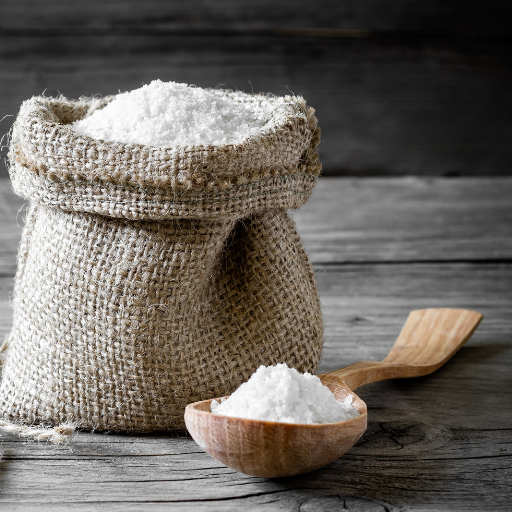
Photosynthesis is a process in which magnesium plays a major role. Magnesium helps produce chlorophyll, which plants need to convert sunlight into food. Additionally, it contributes to plant cell wall stability and improves nutrient absorption efficiency mainly for phosphorous and nitrogen. Sulfur, on the other hand, is important in making some amino acids and vitamins crucial for plant growth. In flowering plants, this leads to healthier growth patterns with bigger flowers and more vibrant colors due to increased availability of these nutrients when Epsom salt is applied onto them. In addition, the use of Epsom salt can help mitigate nutrient imbalances or deficiencies that would normally impede plant health and productivity.
How Epsom Salt Enhances Bloom Production
There are many scientifically validated mechanisms through which Epsom salt specifically enhances bloom production when used on plants. First, magnesium contained in the Epsom salts activates as central atoms in different molecules of chlorophyll thus makes photosynthesis more intense hence a critical requirement for blossom formation. Photosynthesis directly affects the whole plant’s energy availability, resulting in healthier blossoming stages. Moreover, magnesium is important as ATP (adenosine triphosphate) synthesis leading to various cellular functions such as bud formation.
Secondly; sulfur found in Epsom salts helps form amino acids like cysteine and methionine that are essential proteins and enzymes required in growth. It also aids in synthesizing vitamins such as Vitamin B1 which promotes root growth while participating flower system development.
For foliar sprays dissolve 1-2 tablespoons of Epsom salts per gallon of water ensuring thorough mixing so that solution can be uniformly distributed over leaves. Soil applications require even distribution of about one tablespoonfuls per foot tallness along with deep watering so that nutrients penetrate deep into root zone where they are absorbed by roots. These rates apply because flowering crops have proved to have high nutrient uptake efficiency in promoting optimal bloom production without overloading plants with nutrients.
Can using Epsom salts enhance the color and vibrancy of flowers?
Indeed, Epsom salt can enhance flower color and increase their brightness. The magnesium content in Epsom salts affects chlorophyll production for photosynthesis, intensifying green pigmentations and overall plant performance. Moreover, magnesium facilitates other vital mineral uptakes, including phosphorus and nitrogen, which are needed in vibrant blossoms. Sulfur also contributes by creating important amino acids and vitamins required for growth and strong colors of petals. These applications have shown results most often seen as healthier flowers with more color.
Why Epsom Salt Improves Plant Health
Epsom salt improves plant health by providing magnesium and sulfur, which are necessary for many physiological processes. Magnesium plays a big role in making chlorophylls, essential for photosynthesis and helping the plant produce energy. Besides, it has been proved that magnesium can transport phosphorous, another key nutrient required for growth.
Additionally, sulfur helps in the synthesis of amino acids and enzymes that support metabolic roles within a plant system. Sulfur also reinforces plants against environmental stresses, including pests.
Epsom Salt for Roses
For roses to be healthier and better bloomed, it is really helpful to use Epsom salt. Epsom salt includes an essential element – magnesium, which helps form strong stems, thus encouraging chlorophyll production that results in healthy flower buds’ growth, thus giving a lush, bright green foliage. At the same time; sulfur acts as a vital precursor for protein structures while improving general metabolism. If applied regularly, Epsom salts can become an effective solution of magnesium deficiency in roses thus making them stronger, with more splendid blooms. During the growing season, apply one tablespoon of Epsom salts per foot-high plant every month to get optimal yields, but always remember to have proper watering after application so that plants can uptake nutrients.
How to Use Epsom Salt for More Rose Blooms
To increase the number of rose blooms using Epson Salt prepare a solution by dissolving one spoonful in water gallon. In this way, you will boost magnesium levels in soils facilitating the growth process within the given season through applying this mixture monthly whether as a foliar spray or soil drench . As soil is drench, pour it around the base of the plant, ensuring even distribution throughout the root zone, while as foliar spray, apply it early morning or late at night to prevent leaf burn by sunlight. For best results combine it with regular feeding and appropriate watering techniques.
Enhancing Rose Color and Fragrance with Epsom Salt
Epson salt enhances the rose color and its fragrance when it blossoms. Magnesium present in Epson salt plays roles which are critical toward enhancing intense petal colors through elevation of production for chlorophyll within plants. Besides, sulfur content assists in synthesizing volatile oils thereby boosting natural perfume scent flowers carry such as those from roses left out to be smelled even outside nurseries. By providing these basic elements that are necessary for growth purposes: visually and aromatically -aromatic potential-, roses get maximized to their blooming capacity. For maximum uptake of nutrients, incorporate regular Epson salt application into your rose care program while ensuring balanced manuring and proper soil pH levels.
Preventing Common Rose Diseases with Epsom Salt
Epsom salt can help manage the rose diseases by exploiting the plant’s fitness and resistance against pathogens. Furthermore, it provides enough sulfur and magnesium content to be responsible for full growth and strong cell structures. A healthy plant is less susceptible to diseases such as powdery mildew, black spot and rust among others. Regular spraying an Epsom solution helps boost plant immunity so that they can be able to fight off infections effectively. Therefore, if you space adequately, prune properly and maintain good sanitation practices, this will help reduce the occurrence of fungal or bacterial attacks in your rose garden.
Epsom Salt for Annuals and Perennials
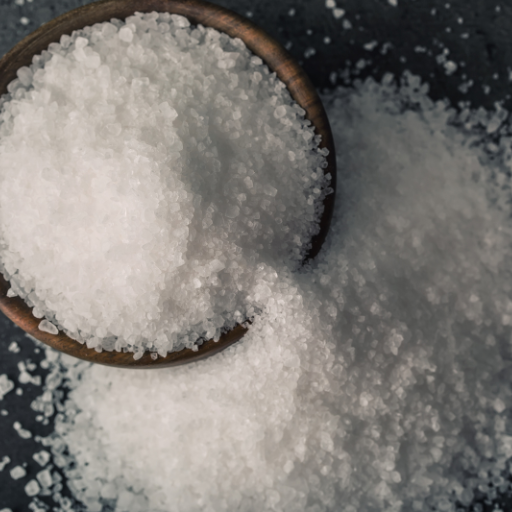
Epsom salts benefit both annuals and perennials, thus improve their overall health and growth. Epsom salt is composed of magnesium sulfate which increases chlorophyll production thereby aids photosynthesis. Accordingly, it results in stronger plants with better leaf development and greener leaves. Additionally, sulfur in Epsom salt synthesizes important proteins and enzymes that play a key role in plant growth. For annuals, Epsom salt can bring about more vigorous flowers as well as longer periods of flowering. In perennials, it fosters robust root systems and enhances nutrient absorption thereby supporting their long-term good health. By applying this technique regularly to different kinds of plants using either soil additive or via foliar spray noticeable improvements can be acknowledged.
Improving the Growth and Blooming of Annual Flowers
Annual flowers that have short life spans but very vibrant ones receive great benefits from the use of Epsom salt whose major component is magnesium sulfate. Magnesium helps make more chlorophyll, increasing the amount of photosynthesis that takes place, leading to faster growing plants with bright blossoms. Sulfur also helps make amino acids and proteins which build stronger cellular walls while improving plant structure in general. It is recommended that one tablespoonful of Epsom salts should be dissolved in a gallon of water, then applied on the soil around these plants fortnightly.However, this procedure would enable them to gain more nutrients, hence having green leaves throughout and even during the blooming period.
How Epsom Salt Benefits Perennial Flowering Plants
Perennial flowering plants, which blossom again year after year can be considerably improved through regular application of Epsom salts. The magnesium sulfate contained within them contributes to long-term health and vitality in several ways.However magnesium is an essential element necessary for photosynthesis over prolonged periods thus resulting into steady energy generation process coupled by healthy foliage.Similarly maintaining strong cell structure through synthesizing proteins and enzymes with sulfur allows perennials to be more resilient and survive under various environmental conditions.
To achieve these benefits, mix one tablespoon of Epsom salt with a gallon of water and drench the area around the base of each plant in the soil every month. This maintains healthy root systems by supporting nutrient uptake, which later ensures plants grow as perennial lush plants whenever they flower. Applying Epsom salt to perennials can lead to observable improvements such as denser foliage, stronger stems, and more frequent and vibrant blooms.
Using Epsom Salt for Older Plants
Old established plants can be revitalized by supplementing them with Epsom salts since the soil they grow is often depleted of essential nutrients over time. Magnesium is an integral part of this compound and thus assists in the formation of chlorophyll in older leaves, which is necessary for photosynthesis, hence maintaining green, healthy ones. It also provides sulfur that helps promote root growth while enhancing overall ability to take up other important nutrients.As a means to revitalize old plants, it involves dissolving two tablespoons fulls of Epsom salt into a gallon of water and applying directly onto the soil near the base once a month.In conclusion,Epsom salt offers a practical solution that gardeners may choose when dealing with aging flora.It will improve vigor, increase flowering, and overall plant health.
Application Methods for Flowering Plants
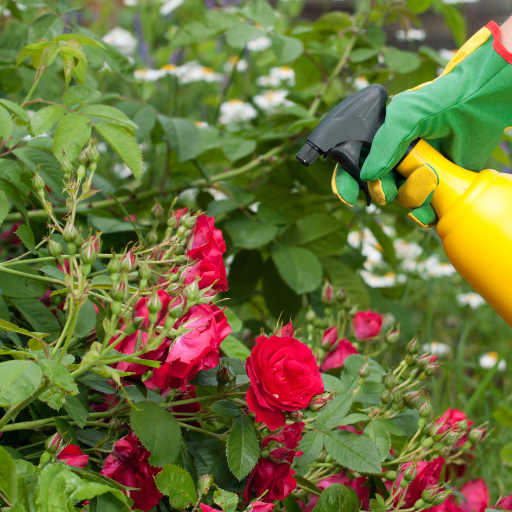
When Epsom salt has to be applied on flowering plants, it is crucial to employ accurate practices to maximize this material’s utilization. It is one way of performing a foliar spray by dissolving a tablespoonful of epsom salts into a gallon of water and then spraying it straightly onto the leaves. This makes Magnesium and sulphur available to be taken up fast by the plants thereby, leading to healthy green foliage as well as beautiful blossoms. Alternatively, soil drenching is another effective method. It entails mixing two tablespoons of Epsom salt with one gallon of water and letting it drain at the base level of your crops. By doing so, the nutrients get into the root zone for faster growth and better general health.
Also, during planting time you can integrate Epsom salts into the soil for ongoing availability of nutrients throughout vegetative and reproductive stages (Sullivan et al., 2004).
Best Practices for Soil Application of Epsom Salt
When adding Epsom salt in garden soils there are specific guidelines that must be followed to achieve desired outcomes. According to authoritative resources, however, recommended application rates for Epsom salt may vary depending on plant type and soil condition but commonly include mixing one tablespoon per square foot of soil. A good strategy adopted in vegetable gardens is putting some amount of Epsom salt around their roots then lightly incorporating them into grounds. That way can help reduce magnesium deficiency disorder symptomatically and improve healthy development.
The other approach used for flower beds involves including about one tablespoon per foot height at planting time, thus having a steady-release supply all through the growth phase. Besides that, carrying out an analysis of what was already present before applying could give more information regarding nutrient levels and hence help regulate dosage based on the garden’s existing needs. Also, monitoring pH changes following its application would be essential since overuse might cause soil acidity alteration.
Furthermore, when Epsom salt is used in combination with other organic fertilizers, it enhances its efficiency, thereby providing a well-rounded nutrient profile. In conclusion, following these best practices, which have been endorsed by reputable agricultural references, will improve the soil fertility and vitality of vegetables and flower crops.
Foliar Spray Techniques for Flowering Plants
For blooming plants, leaf spraying with Epsom salts could be an important way of dealing with magnesium deficiencies and improving the plant’s overall health. Foliar application entails dissolving 1 tablespoonful of Epsom salts into one gallon of water to form a magnesium-rich solution. This mixture should be applied using a fine mist sprayer to ensure even coverage over the leaves.
The solution should be sprayed on in the morning or late afternoon not to cause sunburns on leaves and allow them maximum absorption. The undersides where stomata are more numberless, until the solution just starts dripping off those lower surfaces but don’t till it falls off entirely. Within 48 hours, this method results in quicker uptake of magnesium than through soils having indicators of increased plant vigour.
Levitt (1980), recommends foliar spraying bimonthly during active growth season to maintain adequate nutrient levels.
Therefore, follow-up investigations must be conducted after a certain period has passed since its application; in case any signs such as leaf injury or discoloration occur, either concentration or frequency must be reduced accordingly.
A foliar spray can be included in the overall fertilization protocol, especially when used along with soil amendments, to increase the efficiency of Epsom salts. This ensures a well-balanced nutrient profile that promotes flowering and healthy plants.
How to Mix Epsom Salt Solutions for Flowers
When making Epsom salt solutions for flowers, choose the appropriate concentration based on the plant’s requirement. Normally, you can dissolve one tablespoon (about 15 grams) of Epsom salt in a gallon (3.8 liters) of water to achieve standard solution. Alternatively , you can use a lower concentration of one teaspoon (about 5 grams) per gallon for more delicate plants. Mix it thoroughly until all the Epsom salt dissolves completely. For best results, use this immediately and apply it using either watering cans or spray bottles to distribute them evenly. If applied using sprays over leaves, choose an option that releases very fine droplets which will cover both surfaces under and top areas of leaves uniformly. Maintain optimal amounts of magnesium during growing seasons through regular applications every two to four weeks, enhancing healthier and more vibrant blooms.
Epsom Salt for Container Flowering Plants
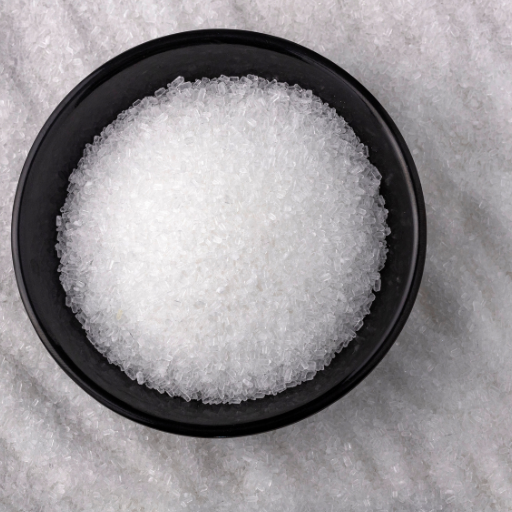
Epsom salt has a high magnesium sulfate content which makes it very beneficial for containerized flowering plants. Magnesium is vital in chlorophyll production necessary in photosynthesis while sulfur is involved in the enzyme activity and protein synthesis required for essential plant functions. To add Epsom salt to water utilized in container gardening, 1-2 tablespoons (15 to 30 grams) of Epsom salt per gallon (3.8 liters) should be mixed. This solution must be used once every two weeks by thoroughly soaking the soil or employing it as foliar spray for quicker nutrient uptake. That way, most common deficiencies are addressed and the entire plant’s health improved resulting into more flowering.
Potted Plants and Epsom Salt Benefits
The potted flowers enjoy several advantages from using Epsom salts or magnesium sulfate. In other words, the element is part of the chlorophyll molecule crucial in photosynthesis. The result will be greener leaves that are more robust since there will be an enhanced production of chlorophylls. In addition, sulfur, which forms another component of this kind of salt, is crucial for enzymes’ activities and protein synthesis, both critical for the growth and development of plants. Besides yellowing leaves and poor flower production caused by magnesium deficiency can also be corrected through application of Epsom salt.
This results from its high solubility in water hence can be absorbed rapidly by plant roots or foliage as an effective supplement when sprayed on leaf surfaces or applied as soil drenches.This makes it effective when applied as foliar spray or soil drenching. It therefore implies that scientifically, optimal concentrations range from 1-2 tablespoons per gallon (3.8 liters) applied biweekly (15 to 30 grams). Nutrient imbalances can thus be avoided by ensuring these concentrations are observed resulting into healthy flowers with vibrant colors.
Using Epsom Salts In Containers
For effective usage of Epsom salt in containers, begin by dissolving 1-2 tablespoons (15 to 30 grams) of Epsom salt per gallon (3.8 liters) of water. This concentration allows for an appropriate assortment of nutrients and helps avoid deficiencies. After the Epsom salts has completely dissolved, use the solution either as a soil drench or foliar spray for faster absorption rates.
Pour until the soil is evenly saturated around the plants for soil drenching purposes. This method enables the roots to absorb magnesium sulphate, fostering more vigorous growth and blossoming. When using it as foliar spray, ensure that there is total coverage on leaves but no excess dripping off. The leaves facilitate rapid correction in case of magnesium deficiency because they take up these nutrients much faster than any other part.
Apply this treatment every two weeks to avoid overdosing your potted plants. According to scientific horticultural studies, biweekly application frequency guarantees a consistent supply of magnesium and sulfur so as not to create any nutrient imbalances. Additionally, observe plant health regularly to adjust the dosage or frequency based on the plant’s response. Always adhere to recommended concentrations and systematic application for maximum overall vigour and flowering potential in containerized flowers.
How to Manage Epsom Salt Use in Small Soil Volumes
It is imperative to consider the particular requirements of your plants and limits of the container environment when managing Epsom salt use in limited soil volumes. The nutrient build-up and potential toxicity probability is high with limited soil volumes. It is, therefore, important that you apply Epsom salts at the correct rate which is between 1-2 tbs (15-30 g) per gallon (3.8 L) of water so as not to overdo it. To avoid disastrous consequences, it is necessary to continually monitor plant health and soil condition. This will help prevent salt accumulation and root damage through ensuring proper drainage for containers. Additonally, balanced nutrition that promotes optimal plant growth can be achieved by alternating watering with application of Epsom salt.
Addressing Common Concerns
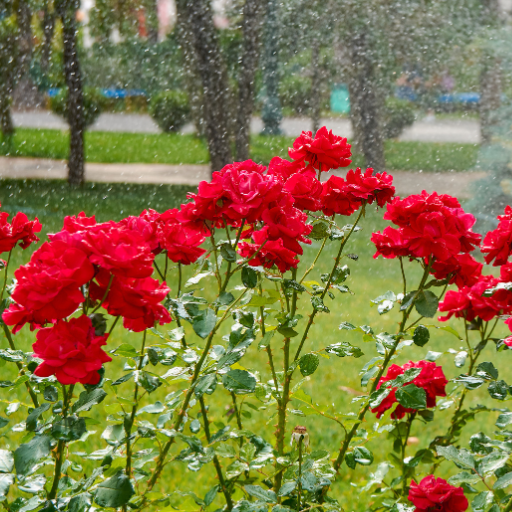
One of the common worries in this case is overdoing the use of Epsom salt, which leads to salt accumulation and root damage. To avoid this, it is important to strictly observe recommend application rates while ensuring adequate soil drainage so as to prevent build up. The other problem commonly raised is the belief that use of Epsom salts will take care of all nutrient problems. While it does offer magnesium and sulfur, it does not satisfy other nutrition needs that may be existing comprehensively. Other possible deficiencies can only be dealt with through regular soil tests coupled with well balanced fertilization plans. There are also fears from some quarters that Epsom salt could hamper plant growth at certain tender stages. It is prudent therefore to keep an eye on the health of plants without necessarily using Epsom salad when the plants are under pressure or still young and hence they are more prone to over-salting.
Can You Overuse Epsom Salt on Flowers?
Too much Epsom salt application on flowers can do more harm than good. An abundance of Epsom salt introduces excess magnesium into the soil which can interfere with absorption of other vital nutrients such as calcium and potassium. An imbalance causes nutritional deficiencies hence impacting negatively on growth and health of plants . Excessive usage may lead to soil salinity, resulting in root damage or even death of plants. To prevent this, one has to stick to recommended quantities per week and regularly assess soil quality based on how plants fair.
Recognizing Signs of Magnesium Overload in Flowering Plants
Magnesium overload in flowering plants reveals various symptoms that indicate the uneven composition of soils. One major sign is interveinal chlorosis where leaf tissues between veins turn yellow leaving green veins behind them; however, sometime it might be confused with lack iron or nitrogen among others but testing can possibly confirm its excessive presence in grounds Another sign is curling or cupping of leaves, which occurs due to disruptions in the plant’s water and nutrient uptake. Such affected leaves may also exhibit necrotic spots that are brown patches resulting from stress-related cell death.
In addition, it is important to note that the root system may also show signs of distress when excess magnesium exists. Poor root development or browning of roots would provide evidence of excessive salinity, which hampers root function and leads to general impaired plant health. Diagnosis can be confirmed through a soil test showing elevated levels of magnesium, typically more than 100 parts per million.
Moreover, too much magnesium can interfere with absorption of other critical nutrients especially calcium and potassium. These deficiencies caused by antagonism further complicate plant health. To address these issues, it is better to undertake comprehensive soil analysis and use ameliorants to equalize nutrition levels, such as gypsum, to displace extra magnesium and restore calcium stocks. Regular monitoring based on the status of soil and plants calls for fine-tuning them so as to reduce the adverse effects associated with magnesium overload.
How to Safely Integrate Epsom Salt into Your Flower Care Routine?
After conducting a soil test, you can safely integrate Epsom salt into your flower care routine. This is important to ascertain that Epsom salt does not worsen the existing magnesium excesses. As a general rule, dissolving 1-2 tablespoons of Epsom salt in a gallon of water should be done every month and used as foliar spray or for watering plants. It is preferable to use this mixture sparingly because magnesium can build up over time if it is overused. Alternatively, one can evenly distribute about 1 tablespoon per foot directly in the base of plants which will call for less quantities when dealing with small plants or more quantities for larger plants. However, it is necessary to monitor plant performance as different species may have variable susceptibility towards magnesium toxicity.
For fear that the use of such materials may result in harm to these flowers, regular checks need to be carried out on both the surrounding soil and the healthiness of these flowers since this would ensure that there are no damages inflicted by Epsom salts in such cases.
Frequently Asked Questions (FAQs)
Q: Can you use Epsom salt on all flowering plants?
A: Epsom salt can be used on many flowering plants, including roses, petunias, and geraniums. It helps enhance bloom production, color vibrancy, and overall plant health.
Q: How does Epsom salt benefit roses?
A: Epsom salt enhances magnesium levels in the soil, which promotes more blooms, improves rose color and fragrance, and helps prevent common rose diseases.
Q: What are the best application methods for Epsom salt on flowering plants?
A: Epsom salt can be applied to flowering plants using soil application or foliar spray techniques. Mixing Epsom salt with water and spraying directly on leaves is effective for quick absorption.
Q: How often should Epsom salt be applied to flowering plants?
A: For most flowering plants, Epsom salt can be applied once a month during the growing season. Adjust frequency based on specific plant needs and soil magnesium levels.
Q: Can you overuse Epsom salt on flowering plants?
A: Overuse of Epsom salt can lead to magnesium toxicity, which can harm plants. Signs include yellowing leaves and stunted growth. Always follow recommended dosage and frequency guidelines.
Q: Is Epsom salt beneficial for potted flowering plants?
A: Yes, Epsom salt is beneficial for potted flowers as it helps maintain nutrient balance in limited soil volumes. Regular application can enhance growth and bloom quality in container plants.
Q: How does Epsom salt enhance flower color and vibrancy?
A: Epsom salt provides essential magnesium, which is crucial for chlorophyll production and photosynthesis. This leads to healthier plants with more vibrant and colorful blooms.
Q: What are the benefits of using Epsom salt on annual flowering plants?
A: Epsom salt boosts growth and bloom production in annual flowers, ensuring they reach their full potential during the growing season. It can also help prevent common nutrient deficiencies.
Q: How can Epsom salt help with flower bud development?
A: Epsom salt supplies magnesium, which supports energy production and nutrient uptake, leading to stronger and more abundant flower bud formation.
Q: Is Epsom salt effective for perennial flowering plants?
A: Yes, Epsom salt can revitalize older perennial plants by improving nutrient absorption and overall plant vigor, leading to more robust growth and increased bloom production.






